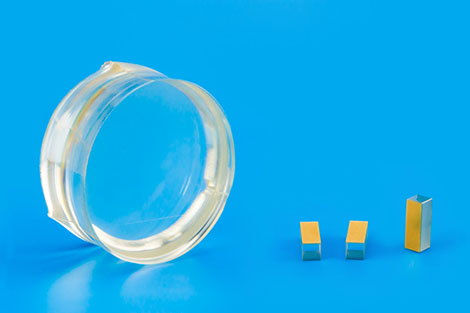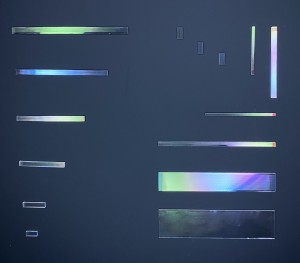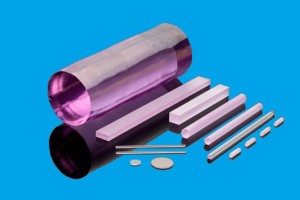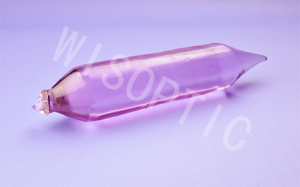LN/PPLN Crystal
LiNbO3 (Lithium Niobate) crystal is a multifunctional material that integrates properties of piezoelectric, ferroelectric, pyroelectric, nonlinear, electro-optical, photoelastic, etc. LiNbO3 has good thermal stability and chemical stability.
As one of the most thoroughly characterized nonlinear optical materials, LiNbO3 is suitable for a variety of frequency conversion applications. For example, it is widely used as frequency doublers for wavelength >1 μm and optical parametric oscillators (OPOs) pumped at 1064 nm as well as quasi-phase-matched (QPM) devices. Due to its large E-O and A-O coefficients, LiNbO3 crystal is also commonly used for phase modulators, waveguide substrate, surface acoustic wave wafers, and Q-switching of Nd:YAG, Nd:YLF and Ti-Sapphire lasers.
LiNbO3 can be doped with a variety of elements, such as Er, Pr, Mg, Fe, etc., which give the material unique properties. For example, the damage threshold of MgO: LiNbO3 is more than double that of pure LiNbO3.
PPLN: Periodically Polarized Lithium Niobate (PPLN) is a highly efficient wavelength conversion non-linear crystal with wide light transmission range (0.4-4.5 µm) covering the near and mid-infrared regions, long service life, and can be used for frequency doubling, beat frequency, sum frequency, optical parametric oscillation and optical parametric amplification, etc. Temperature control is required during use. The PPLN OPO process can be used to obtain light with wavelength of 3~4.5 µm, which is difficult to be achieved (as high-efficiency output) with conventional phase matching. Different wavelengths of PPLN correspond to different polarization periods.
Contact us for the best solution for your application of LiNbO3 and PPLN crystals.
WISOPTIC Capabilities -LiNbO3
• Various sizes of finished components for different applications.
• Strict quality control
• Reliable delivery
• Very competitive price
• Technical support
WISOPTIC Standard Specifications* - LiNbO3
| Dimension Tolerance | ± 0.1 mm |
| Angle Tolerance | ± 0.5° |
| Flatness | < λ/8 @ 632.8 nm |
| Surface Quality | < 20/10 [S/D] |
| Parallelism | < 20” |
| Perpendicularity | ≤ 5' |
| Chamfer | ≤ 0.2mm @ 45° |
| Transmitted Wavefront Distortion | < λ/4 @ 632.8 nm |
| Clear Aperture | > 90% central area |
| Coating | AR coating: R < 0.2% @ 1064 nm, R < 0.5% @ 532 nm |
| * Products with special requirement upon request. | |
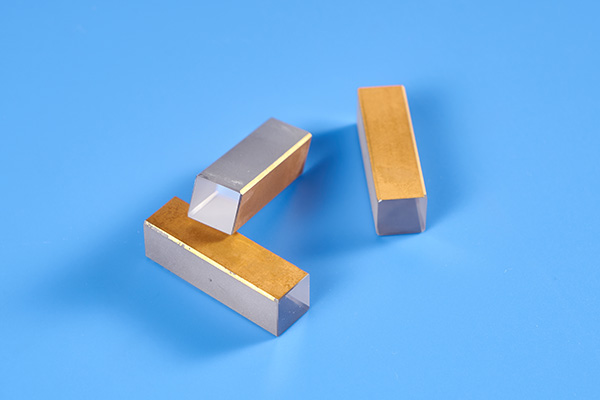
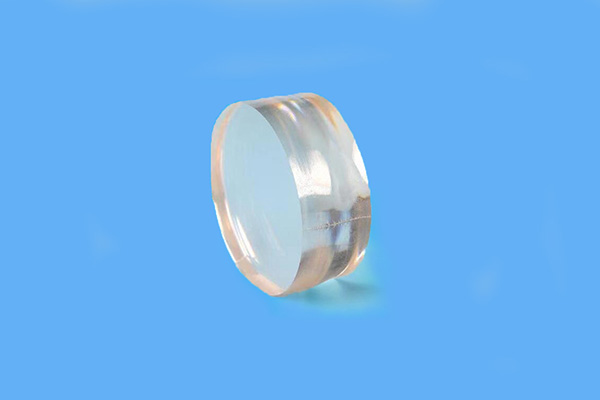
Advantages of MgO:LiNbO3 compared with LiNbO3
• Higher frequency doubling (SHG) efficiency for pulsed Nd:YAG (65%) and CW Nd:YAG (45%)
• Higher performance in applications of OPO, OPA, QPM doublers and integrated waveguide
• Much higher photorefractive damage threshold
Primary Applications - LiNbO3
• Frequency doublers for wavelength >1 μm
• Optical parametric oscillators (OPO) pumped at 1064 nm
• Quasi-phase-matched (QPM) devices
• Q-switches (for Nd:YAG, Nd:YLF and Ti-Sapphire lasers )
• Phase modulators, waveguide substrate, surface acoustic wave wafers
Physical Properties - LiNbO3
| Chemical formula | LiNbO3 |
| Crystal structure | Trigonal |
| Point group | 3m |
| Space group | R3c |
| Lattice constants | a=5.148 Å, c=13.863 Å, Z = 6 |
| Density | 4.628 g/cm3 |
| Melting point | 1255 °C |
| Curie temperature | 1140 °C |
| Mohs hardness | 5 |
| Thermal conductivity | 38 W/(m·K) @ 25°C |
| Thermal expansion coefficients | 2.0×10-6/K (//a), 2.2×10-6/K (//c) |
| Hygroscopicity | Non-hygroscopic |
Optical Properties - LiNbO3
| Transparency region (at “0” transmittance level) |
400-5500 nm | ||||
| Refractive indices | 1300 nm | 1064 nm | 632.8 nm | ||
|
ne=2.146 no=2.220 |
ne=2.156 no=2.232 |
ne=2.203 no=2.286 |
|||
| Thermal optic coefficients | dno/dT=-0.874×10-6/K @ 1.4 μm dne/dT=39.073×10-6/K @ 1.4 μm |
||||
|
Linear absorption coefficients |
326 nm |
1064 nm |
|||
| α = 2.0 /cm | α = 0.001~0.004 /cm | ||||
|
NLO coefficients |
d33 = 34.4 pm/V, d22 = 3.07 pm/V, |
||||
| Electro-optic coefficients | γT33=32 pm/V, γS33=31 pm/V, γT31=10 pm/V, γS31=8.6 pm/V, γT22=6.8 pm/V, γS22= 3.4 pm/V |
||||
| Half-wave voltage (DC) | Electrical field // z, light ⊥ z | 3.03 kV | |||
| Electrical field // x or y, light // z | 4.02 kV | ||||
| Damage threshold | 100 MW/cm2 @ 1064nm, 10 ns | ||||

